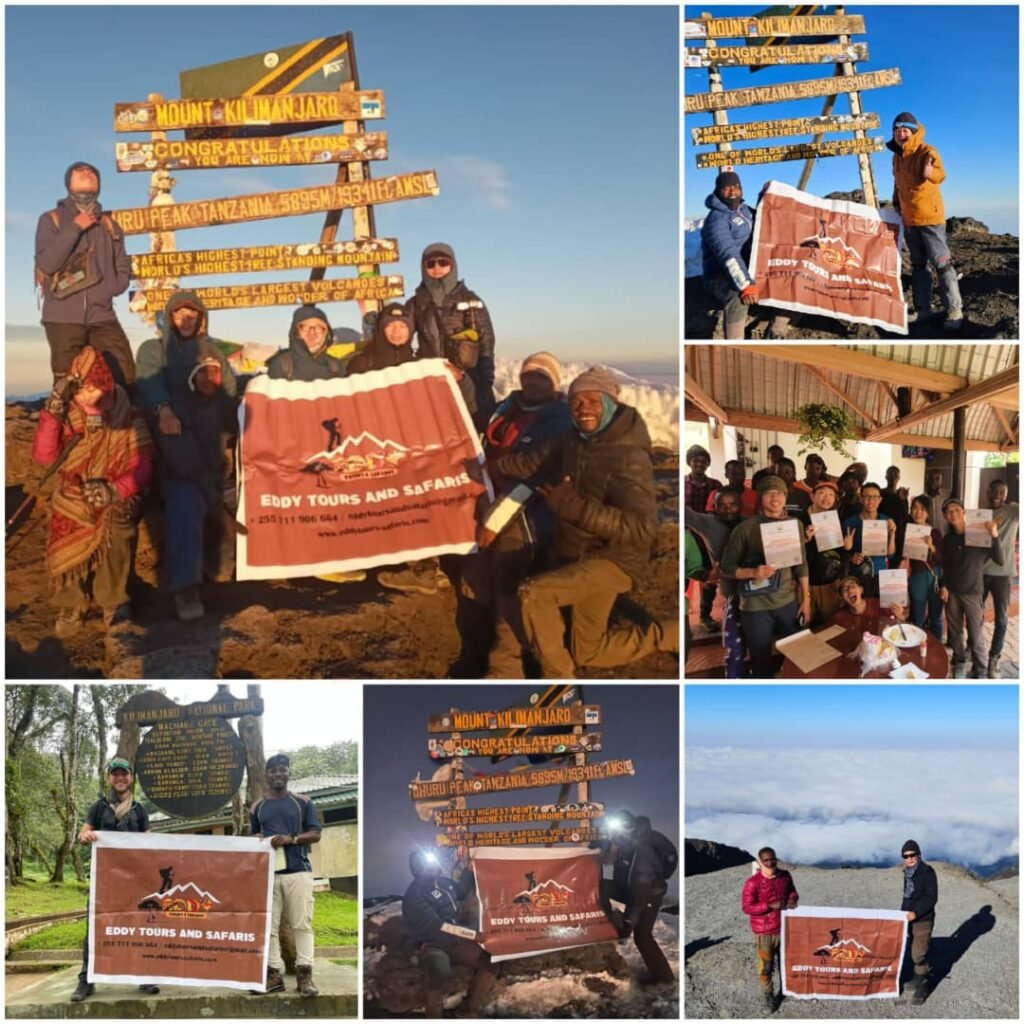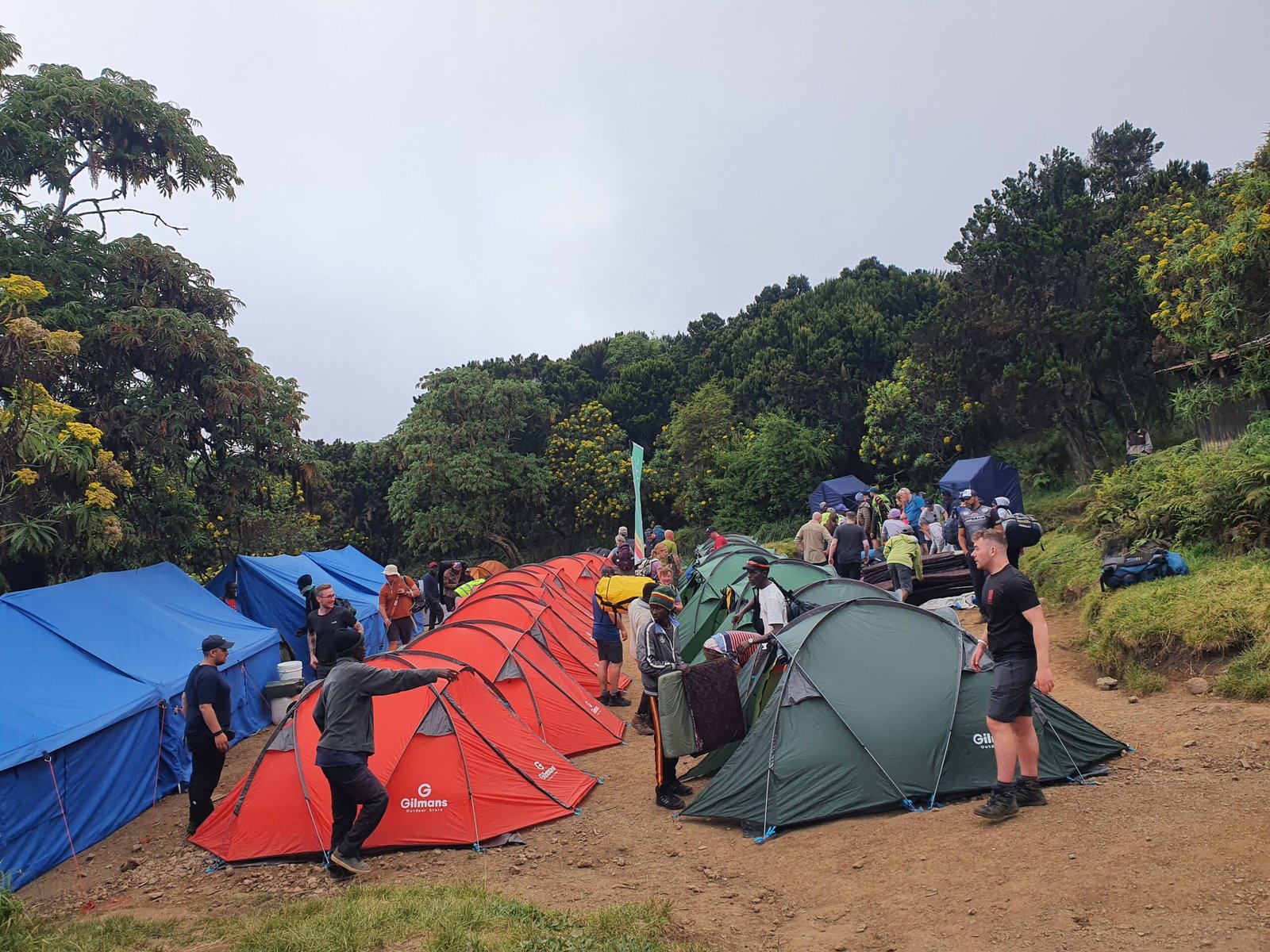The best Kilimanjaro’s Climbing Machame in Six-Days Full Package 2025&2026
The best Kilimanjaro’s Climbing Machame in Six-Days Full Package 2025&2026 Route offers one of the most scenic and challenging trekking experiences on Africa’s highest peak. Known as the “Whiskey Route” due to its steeper and longer trail compared to the “Coca-Cola Route” (Marangu), the Machame Route is favored by adventure seekers looking to experience varied landscapes while maximizing acclimatization opportunities. This comprehensive guide to the six-day Machame climb focuses on the full tour package for 2025 and 2026, covering everything from the detailed itinerary to packing lists, safety tips, and travel logistics.

Overview of Mount Kilimanjaro
Mount Kilimanjaro stands tall at 5,895 meters (19,341 feet), making it the tallest free-standing mountain in the world. It is an iconic trek that attracts adventurers from across the globe due to its diverse ecosystems, from tropical forests at the base to arctic conditions at the summit. The allure of summiting Kilimanjaroparticularly by the Machame Routelies in both the physical challenge and the stunning scenery along the trail.
The Appeal of Machame Route
The Machame Route is considered one of the most scenic routes on Mount Kilimanjaro. Offering climbers stunning views, varied terrain, and excellent acclimatization opportunities, it’s no wonder it’s one of the most popular routes to the summit. While slightly more challenging than the Marangu Route, it provides a rewarding experience for trekkers who want a taste of Kilimanjaro’s biodiversity and dramatic landscapes.
Comparing Machame to Other Kilimanjaro Routes
The Machame Route is often contrasted with other routes such as Marangu, Lemosho, and Rongai. Unlike the Marangu Route, which offers hut accommodations, Machame is a camping route, with tents provided by tour operators. Its longer trail allows for better acclimatization compared to Marangu, which is shorter and has a quicker ascent. Machame is also known for its scenic value, with trekkers passing through rainforests, moorlands, and alpine deserts.
Understanding the Machame Route
Route Highlights: What to Expect
The Machame Route provides a thrilling combination of natural beauty and physical challenge. Starting from the tropical rainforests at Machame Gate, the trail moves through varying ecosystems, eventually leading to the summit at Uhuru Peak. Climbers can expect to pass through misty cloud forests, rocky alpine deserts, and ultimately the icy slopes near the summit.
Terrain and Difficulty Level
The Machame Route is generally regarded as moderately difficult. While it doesn’t require technical climbing skills, it is a physically demanding trek with steep ascents and longer hiking days. The terrain varies significantly, from muddy forest paths to rocky highlands and scree-filled slopes near the summit. The Machame Route is ideal for those who are reasonably fit and looking for a challenge.
Altitude Profile and Key Points of Interest
The Machame Route follows a gradual altitude gain, which allows trekkers more time to acclimatize. Key points of interest along the route include Shira Plateau, Lava Tower (4,630 meters), Barranco Wall (a steep but non-technical rock scramble), and Stella Point, which is the final stop before reaching Uhuru Peak at 5,895 meters. The route’s acclimatization-friendly ascent profile greatly enhances success rates for reaching the summit.
The best Kilimanjaro’s Climbing Machame in Six-Days Full Package 2025&2026 Machame Route Itinerary
Day 1: Arrival in Moshi and Preparation
Most climbers will arrive at Kilimanjaro International Airport and transfer to a hotel in Moshi. This day is typically spent resting, reviewing gear, and receiving a briefing from the tour operator.
Day 2: Machame Gate to Machame Camp
The trek begins at Machame Gate (1,640 meters), where climbers register with park authorities. The journey starts with a 5-7 hour hike through the lush rainforest, ending at Machame Camp (2,835 meters). Along the way, you may encounter monkeys and exotic birds as you navigate the dense, misty forest.
Day 3: Machame Camp to Shira Camp
The trail steepens as climbers leave the forest and enter the moorland zone. The hike to Shira Camp (3,750 meters) takes about 4-6 hours, offering panoramic views of the surrounding landscape. This is the first real glimpse of the snow-capped Kibo Peak.
Day 4: Shira Camp to Barranco Camp via Lava Tower
On this acclimatization day, climbers ascend to Lava Tower (4,630 meters) before descending to Barranco Camp (3,960 meters). The route takes about 6-8 hours and helps the body adjust to higher altitudes by ascending high and sleeping low. This day can be challenging due to the increased altitude, but the acclimatization process is vital for summit success.
Day 5: Barranco Camp to Barafu Camp
One of the most exciting parts of the trek is the ascent of the Barranco Wall. Though it looks intimidating, the wall is non-technical, and climbers can easily navigate it with the help of guides. The trail then continues to Barafu Camp (4,673 meters), the final camp before the summit attempt. Climbers rest early at Barafu in preparation for a midnight summit push.
Day 6: Barafu to Uhuru Peak and Descent
The final summit push begins just after midnight. Climbers ascend steep switchbacks in the dark, reaching Stella Point (5,739 meters) as the sun begins to rise. From here, it’s a short but exhausting trek to Uhuru Peak, the highest point on Mount Kilimanjaro. After enjoying the summit, the descent begins, retracing steps back to Barafu and continuing down to Mweka Camp.
FAQs About the Machame Route
Is the Machame Route difficult for beginners? The Machame Route is moderately difficult and involves longer, steeper hikes than other routes. However, it is non-technical, and beginners in good physical condition can successfully complete it with the right preparation.
How much does a full package cost? A typical full package for the six-day Machame climb ranges between $1500 and $2500, depending on the operator, inclusions, and the season. The package usually covers guides, porters, meals, camping equipment, and park fees.
What happens if you cannot summit? If a climber shows signs of severe altitude sickness or fatigue, guides will assess the situation. If necessary, climbers can descend with a porter, or emergency evacuations can be arranged.
How do you deal with altitude sickness? Acclimatizing properly is key to dealing with altitude sickness. The Machame Route’s itinerary includes ascent profiles designed for acclimatization. Medications like Diamox can also help prevent symptoms.
What equipment is provided by the operator? Most operators provide tents, sleeping mats, cooking equipment, and meals. Climbers are typically responsible for bringing personal gear like sleeping bags, hiking boots, and layered clothing.
Can I climb the Machame Route in less than six days? While it’s possible to climb the Machame Route in less than six days, it’s not recommended due to the increased risk of altitude sickness. The six-day itinerary allows for better acclimatization, increasing summit success rates.
Inclusions
Quality, waterproof, four-season mountain sleeping tents (on twin sharing basis)
Emergency Oxygen Cylinder
Quality Mess tents Day 1
Conservation fees (part of park fees)
All transfers to the mountain and back to your Moshi hotel
Camping or Hut fees (part of park fees)
Clean, purified drinking water
Guides, Porters, Cook salaries and park fees
Sleeping Mattress
All meals while on the Mountain
Rescue fees (part of park fees)
Large portions of fresh, healthy, nutritious food
Kilimanjaro summit certificate
VAT (18% charged by the Government)
Professional, experienced, mountain guides
Exclusions
Transfers (available as an optional addon)
Personal Expenses (e.g. laundry, telephone, beverages, etc.)
Surcharge for online payment of advance and balance (5% on each payment)
Tanzania Visa
Liquors, beers and bottled beverages

